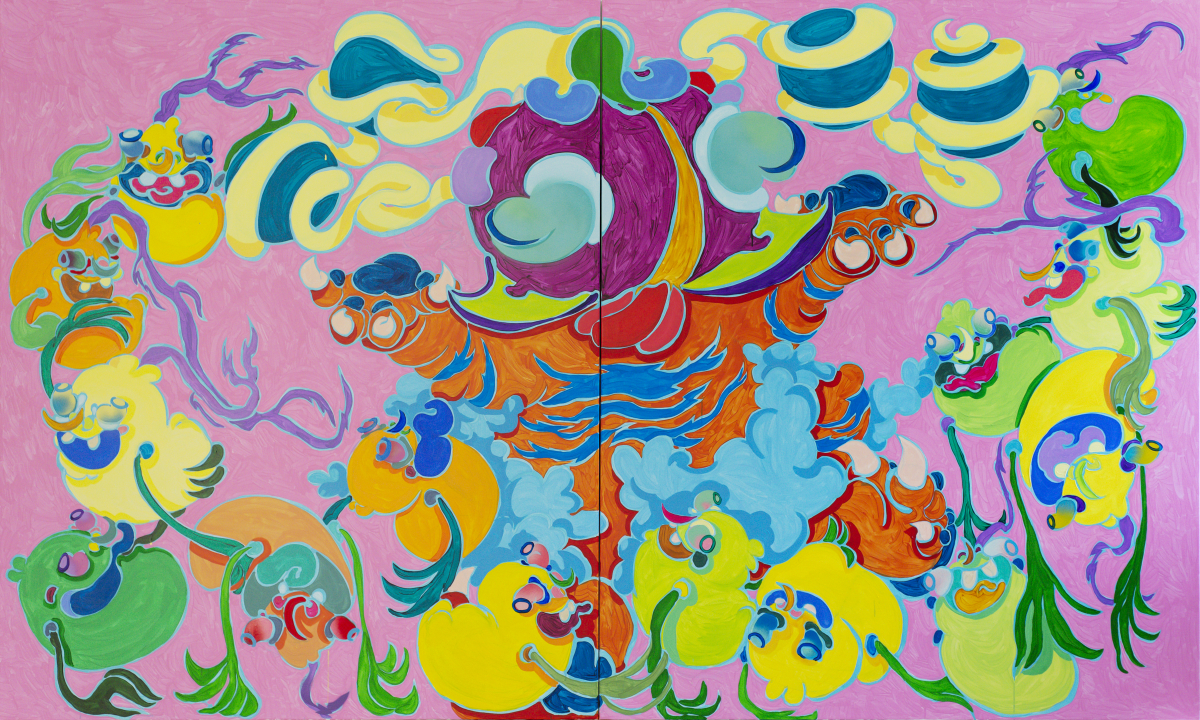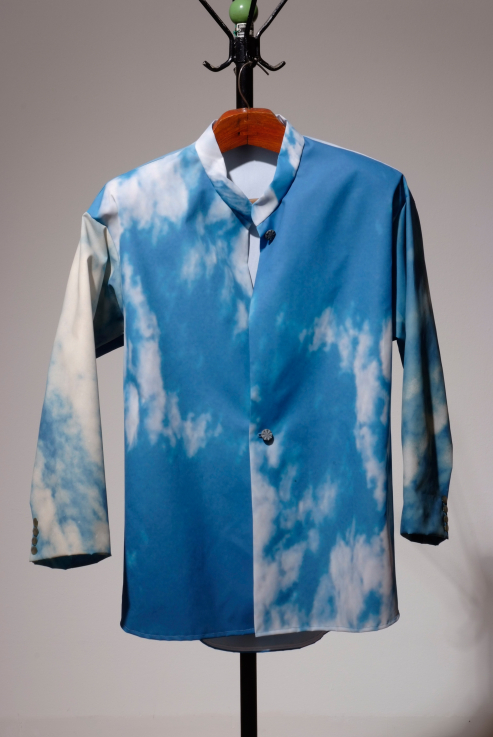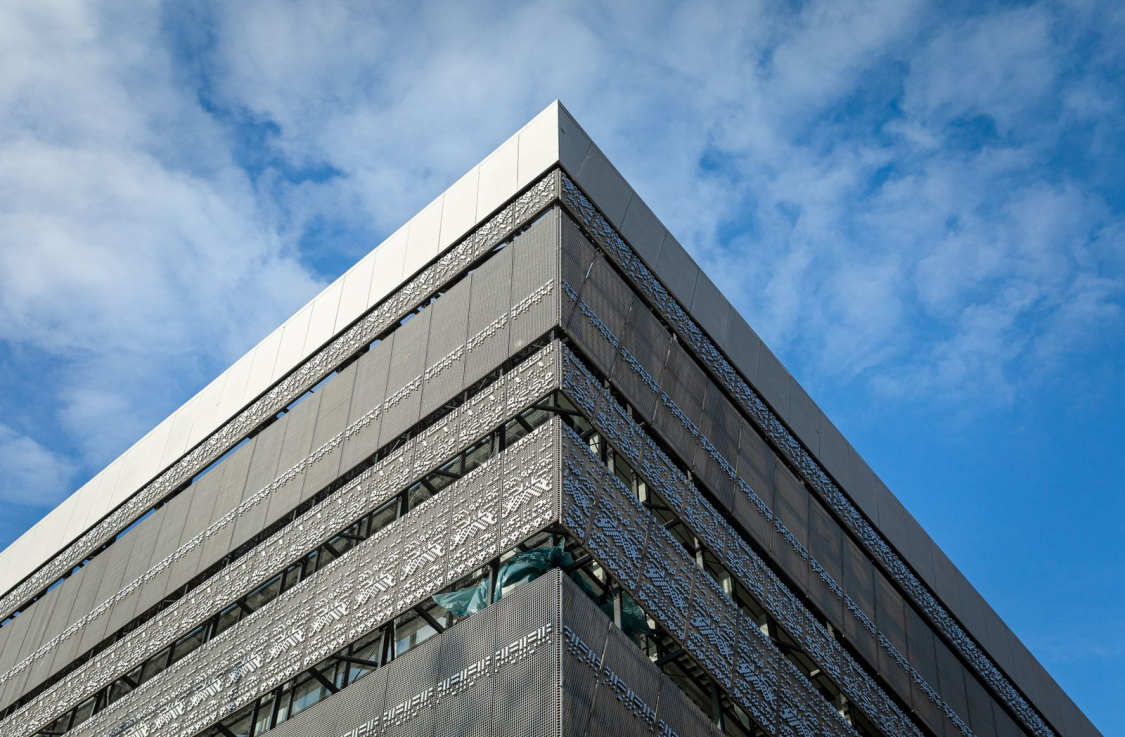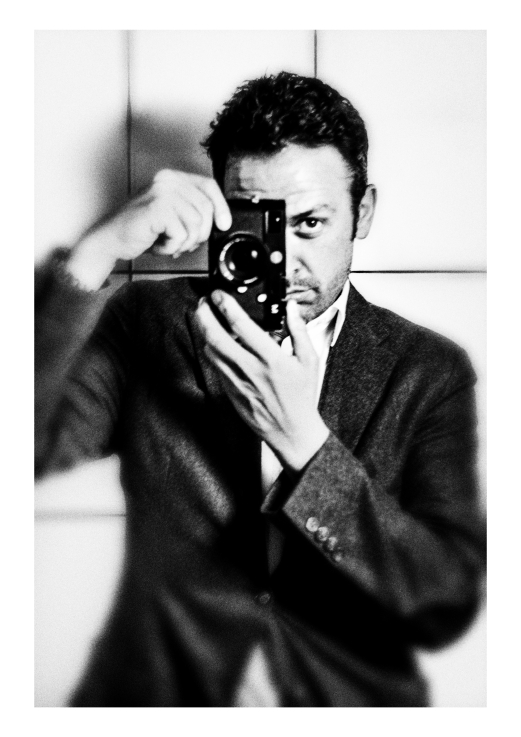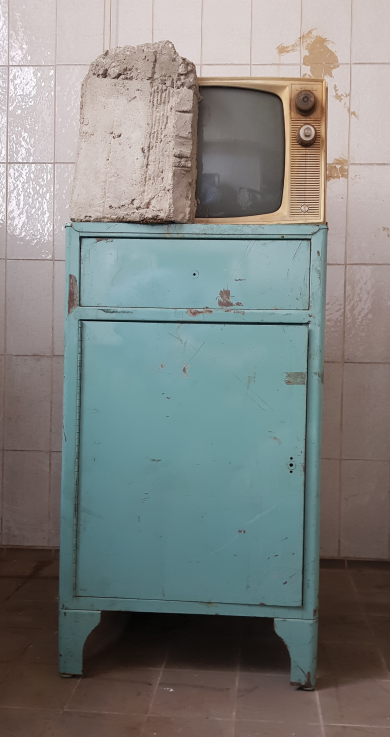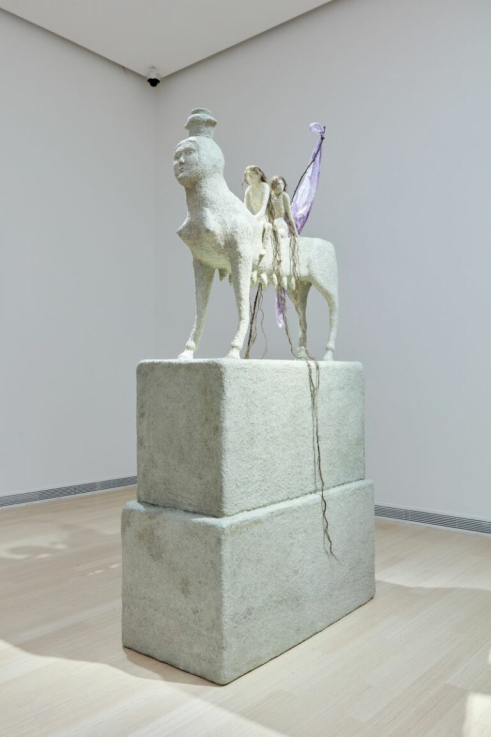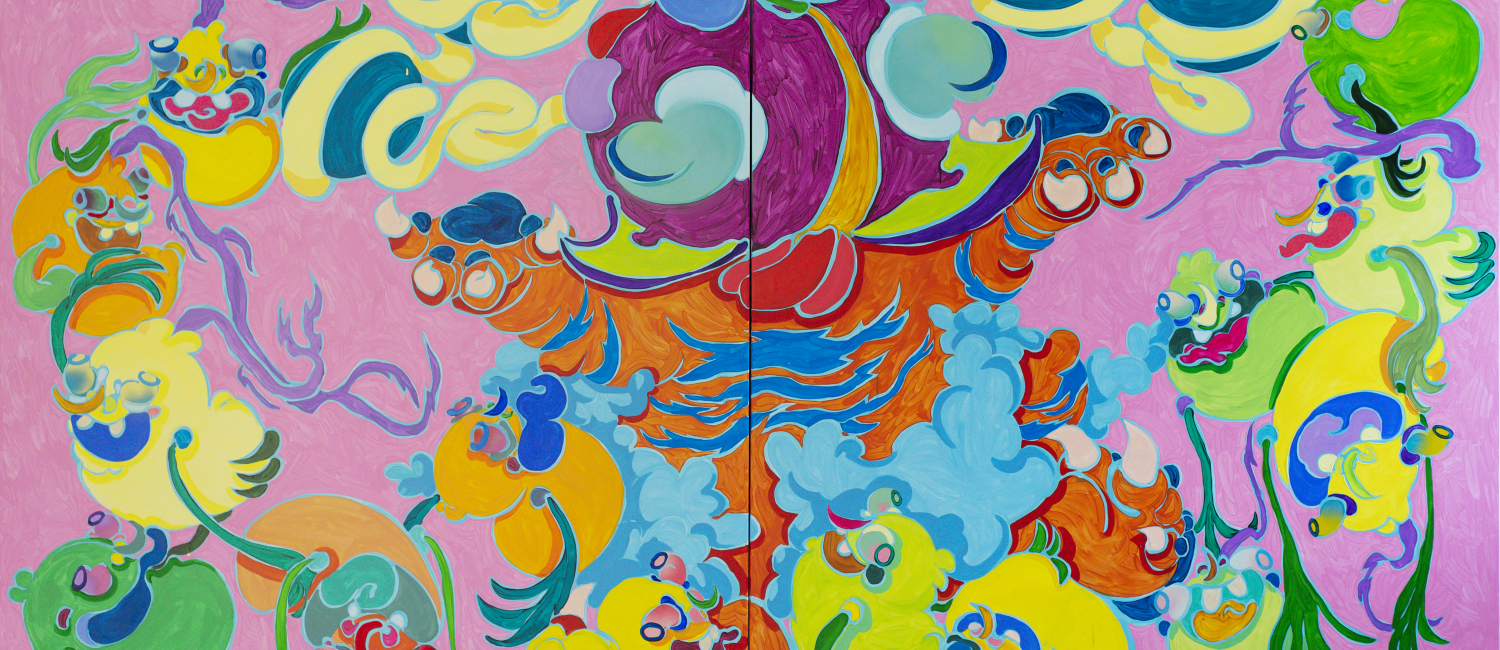Annual program 2023
Focus on care, a renewed digital visitor experience and new exhibitions based on partnerships: Ludwig Museum – Museum of Contemporary Art unveils its 2023 programme plan
For years, the Ludwig Museum – Museum of Contemporary Art, Budapest has been framing its annual exhibition programme arround an overarching theme. Following the year of Resilience in 2022, this year care will be the phenomenon that will serve as the interpretive framework for our exhibitions and related programmes. “Care” encompasses, beyond the strict meaning of the word, solidarity, personal and social responsibility, trust, humanity and altruism.
This year, the museum’s temporary exhibitions continue to showcase major artists and current trends in contemporary art. This year’s season will be launched with the poetic and playful oeuvre of András Lengyel, the founder of the Cloud Museum and a prominent artist of the second generation of the Hungarian neo-avant-garde. As part of the Bartók Fest, a major international collaboration Boris Lurie & Wolf Vostell. Art after the Shoa will be put on display. The exhibition is of great significance in that it will allow the Hungarian public to get to know Wolf Vostell, one of the most important German artists in the collection, in a context that, in addition to the radical features of his art, also sheds light on his socially formative endeavours. Cuteism. Between Abstraction and Figuration may be the hit of the summer, an international selection that presents both familiar and alienating imagery, mostly taken from cartoons, comics or the internet.
Opening in September, Handle with Care! reflects on the fragility of life, the vulnerability of individuals and communities in need of care, and explores the role of contemporary art and museums in addressing this complex social problem. The exhibition Till Brönner: Identity –Landscape Europe will be on show for the first time at the Ludwig Museum. Opening in October, the exhibition explores the reality of post-pandemic Europe through the eyes of the renowned jazz musician and photographer. This December, in collaboration with the Esterházy Privatstiftung, the museum will once again host the Esterházy Art Award, a benchmark overview of the young Hungarian art scene.
The permanent exhibition, Time Machine explores different aspects of personal, artistic and historical time through the works selected from our collection, and we are pleased to announce that the 290-page catalogue of the exhibition is now available. The presentation of the exhibiting artists in the form of short video interviews will continue in 2023, and accompanying events will include a commemoration of the 50th anniversary of Picasso’s death.
This year, the Venice Biennale will also be a special focus. As a result of several years of research, Géza Boros’s new book on the history of the Art Nouveau Hungarian pavilion, The Hungarian Pavilion at the Venice Biennale, has been published. Zsófia Keresztes’s highly successful mosaic sculpture installation, After Dreams: I Dare to Defy the Damage, which was shown at the 59th Venice Biennale of Fine Arts, is on display until March. At the 18th Venice Architecture Biennale, opening in May, the Ludwig Museum, in collaboration with the Museum of Ethnography and Városliget Zrt., will present Reziduum – The Frequency of Architecture. The interactive exhibition – with sound, light and space installations – revolves around the new iconic building of Budapest, the new Museum of Ethnography designed by Marcel Ferencz (Napur Architect).
One of the biggest challenges for museums in the 21st century is to personalise the museum visitor experience, engage visitors and create knowledge together. In recent years, especially in the context of the pandemic, it has become clear that the institution’s leadership in the contemporary art scene needs to be strengthened in the spirit of sustainability and innovation. In the second half of 2023, with the support of Hungarian Telekom, the Ludwig Museum will undertake a digital development based on its own research to renew the tools for the reception of contemporary art, using the latest methods of museum education.
Time Machine: A New Selection from the Collection of the Ludwig Museum
1 September 2020 – 31 December 2023
The new selection from the museum’s collection is not about the science-fiction possibility of time travel, but examines the relationship between time and art from different perspectives, and sees the works themselves as time machines that allow us to travel mentally.
...everything is up in the clouds... Exhibition by András Lengyel
3 February – 28 May 2023
For thousands of years, humanity has been searching the skies for scientific and religious reasons, establishing fundamental links between macrocosmic phenomena and our microcosm. This contemplation has dominated András Lengyel’s approach to life and work. He has been collecting clouds since the seventies, and in his own way he creates a link between the tangible and the intangible by means of visual art.
The exhibition ... Everything Is up in the Clouds ... is an overview of András Lengyel’s rich oeuvre, spanning his entire career, yet it is not a retrospective, as new works are still being created today. Through thematic blocks, it traces the process by which the oeuvre, which grew out of Fluxus and conceptual art, has been developed in postmodernism through action, photo-based reproduced graphics, stamping and mail art.
Lengyel belongs to the second generation of Hungarian neo-avant-garde and was a founding member of the Rózsa Circle, which played a major role in the art of the 1970s. He began his studies at the College of Fine Arts as a painter, and from his third year he continued his studies at the Graphic Arts Department. His clouds migrated into the field of reproduced graphics, and then, along with other important motifs such as the triangle, the book, the Cloud Museum, found their place in photographs, actions or installations, only to reappear in paintings in his later years.
These symbols of human knowledge can invite their viewers to become part of a tradition of thousands of years through which man has searched for his place in the universe. András Lengyel’s artworks are intended to facilitate this immersion in their own playful and witty way: in his case, everything can be art, even a piece of tile and a neon tube, if it helps us contemplate as an object of meditation. If we go through the stages of cognition, at the end of our journey we may find ourselves dissolved in the universe around us.
The exhibition will be accompanied by a catalogue including studies by art historians.
Curator: Krisztina Üveges, art historian
The exhibition and the catalogue are sponsored by the National Cultural Fund of Hungary.
Boris Lurie & Wolf Vostell: Art after the Shoah
31 March – 30 July 2023
The confrontational art of Boris Lurie (1924–2008) and Wolf Vostell (1932–1998) is displayed jointly for the first time in Hungary in the exhibition Art after the Shoa. From the late fifties, both artists were radically engaged in Shoah. At a time when war was still a taboo subject for a large part of society, they chose as the subject of their art a confrontation with this painful period. By combining the most shocking images of war crimes with superficial advertising images, their works were also an indictment of a post-war consumer society that had simply restarted, oblivious to the trauma suffered by Jews and victims. To create this shocking effect, both artists incorporated the most modern techniques into their works.
The exhibition is supported by the Boris Lurie Foundation, the Wolf Vostell Estate, the Peter und Irene Ludwig Stiftung and the Bartók Festival.
Curator: Prof. Dr. Beate Reifenscheid
Assistant curator: Jan Elantkowski
Cuteism: Between Abstraction and Figuration
23 June – 1 October 2023
The aim of the exhibition is to present and contextualise a current tendency in contemporary art, and especially in painting. The artworks, mainly by artists of the middle-aged generation, are constantly revisiting familiar characters from the cartoons of the 1990s. It is an easily detected visual language that oscillates between abstraction and figuration, experimenting with the conscious blurring and interplay or even separation of these two poles. The works are assembled in a patchwork-like manner, based on iconic symbols, elements taken from popular culture and a combination of various artistic styles.
For this reason, the works, often based on elements taken from real-life imagery or everyday life, mostly from cartoons and comics, are both familiar and alienating. Everything seems to be in place, but there is something disquieting, something suspicious about them. The absurd experience of recent years, the emergence of global problems and conflicts and increased digitalisation have been a heavy mental burden for the man who lost his footing. The exhibited artworks approach global or everyday problems that seriously affect societies in a light and playful way, with humour and (self-)irony. Adding a critical tone to the notion of “cuteness”, they encourage the audience to question perfectionism and kitsch mediated and represented mainly by social media.
The international selection will recall a transcontinental vision that reflects on the universality of art alongside globalisation.
Curators: Jan Elantkowski, Maj Ajna
Handle with Care!
8 September – 26 November 2023
Care as a social metaphor can be interpreted on the personal level (self-care) or projected onto relationships between people (maternal or parental care, elderly care), but also has strong economic dimensions (care crisis, care migration, global care chains). Beyond meeting people’s physical and emotional needs, the concept of care can also be extended to caring for all living beings and, in a broader sense, for the Earth itself.
The exhibition’s title Handle with Care! refers to the fragility of life, the vulnerability of individuals and communities in need of care, cracks and gaps in the social care system. At the same time, it also points to the role of the museum and the careful handling of artworks, which, in a new context, can be extended beyond objects to include communities, caring professionals, those who do invisible work and people in marginalised situations. In a time of multiple crises – health, natural, economic, financial crisis – the exhibition seeks to answer the question of how to rethink care and, through this, what is the role of the museum (and art) in this process?
Curators: Viktória Popovics, Rita Dabi-Farkas
Till Brönner: Identity – Landscape Europe
20 October 2023 – 28 January 2024
Photographer and musician Till Brönner is a dedicated European of German descent, who grew up in a family of musicians in Italy and in the Rhineland. He is considered to be one of the most successful German jazz musicians and is also known as the “German Chat Baker” for the melodic quality of his performance. A true trumpet virtuoso, his music and photographs are a convincing expression of the contemporary zeitgeist.
In search of his own identity, he sensitively presents the European vision and the diversity of our world, using the tools of gesamtkunstwerk. Whether it is portraits, natural or industrial landscapes or architecture, as a sensitive observer he documents and addresses not only the events and social trends of his European homelands, but also the problems of a world struggling with crises such as the epidemic caused by the Covid-19 virus and the war in Ukraine. His current project “Identity – Landscape Europe” will be shown for the first time at the Ludwig Museum.
Curators: Walter Smerling, Gergely Pröhle and Julia Fabényi
Esterházy Art Award Short List 2023
15 December 2023 – 3 March 2024
The Esterházy Privatstiftung will announce the Esterházy Art Award again in 2023. An international jury of experts will select up to 25 artists from the shortlist of the submitted entries, which will be exhibited at the Ludwig Museum. The cultural significance of the Esterházy Art Award is not only reflected in the awarding of the prize, but also in the accompanying exhibition. Due to its size, its central role and the careful selection of the nominated artists, it is a benchmark overview of the young Hungarian art scene.
Established in 2009, the prize is aimed at promoting contemporary art and international dialogue. The prize of €5,000 per person is awarded every two years, to a maximum of three Hungarian artists under 45 years, by an independent jury. The competition is open to artists working in painting and techniques bordering on painting, as well as installations using these techniques.
The 2021 winners are Luca Sára Rózsa, Kata Tranker and Ádám Ulbert.
18th International Architecture Exhibition, Venice, Hungarian Pavilion
Reziduum – The Frenquency of Architecture
20 May – 26 November 2023
The starting point of the exhibition is the contemporary ornamental patterns that cover the metal grid structure of the new Ethnographic Museum’s facade, built as part of the Liget Budapest Project. These patterns come from the traditions of different peoples and cultures preserved in the museum, which the designers reduced to a simple form. The result is a metal grid of around half a million pixels that runs along the façade of the building. The ornamentation is a tapestry woven from the motifs of Hungarian and universal culture, symbolising the 150-year-old Ethnographic Museum’s unrivalled collection. The planned interactive exhibition is an exciting all-arts experiment, a sound, light and space installation, that uses contemporary art to make folk tradition and its timeless content accessible.
National Commissioner: Julia Fabényi
Curator: Mária Kondor-Szilágyi
Exhibitors: Marcel Ferencz, architect, Judit Z. Halmágyi, architect, Péter Mátrai, composer-architect, Ferenc Haász, light designer
Collaborating professional partner: Ethnographic Museum, Városliget Zrt.
Press contact:
Gabriella Rothman, rothman.gabriella [at] ludwigmuseum.hu
